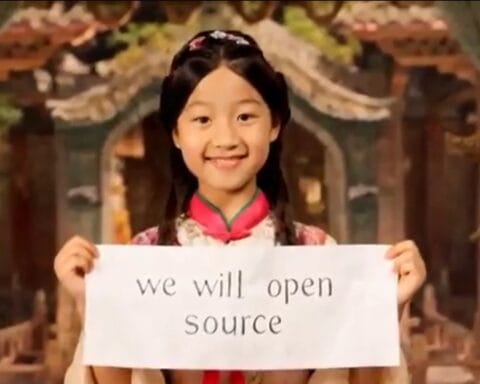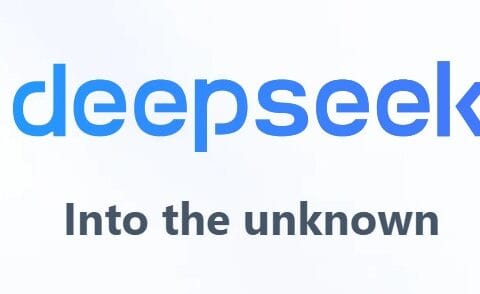Last Updated on September 30, 2024 12:01 pm by Laszlo Szabo / NowadAIs | Published on September 30, 2024 by Laszlo Szabo / NowadAIs
Meta’s Llama 3.2: The AI Herd Stampedes into Multimodal Territory – Key Notes:
- Meta introduces Llama 3.2, a collection of multimodal AI models processing both text and images
- Models range from 1B to 90B parameters, suitable for on-device to cloud deployment
- Open-source release aims to democratize AI technology across various platforms
A Pioneering Leap into Multimodality
Meta has unveiled Llama 3.2, a cutting-edge collection of multimodal large language models (LLMs) that can process both text and visual inputs. This pioneering release marks Meta’s foray into the realm of multimodal AI, ushering in a new era of versatile and intelligent applications capable of understanding and reasoning across diverse data modalities.
Llama 3.2 represents Meta’s pursuit of open and accessible AI technologies. Building upon the success of its predecessor, Llama 3.1, which made waves with its massive 405 billion parameter model, Llama 3.2 introduces a range of smaller and more efficient models tailored for deployment on edge and mobile devices.
Scaling Down for Scalability
While the Llama 3.1 model’s sheer size and computational demands limited its accessibility, Llama 3.2 aims to democratize AI by offering models that can run on resource-constrained environments. This strategic move acknowledges the growing demand for on-device AI capabilities, enabling developers to create personalized, privacy-preserving applications that leverage the power of generative AI without relying on cloud computing resources.
The Llama 3.2 Herd: Diversity in Capabilities
“Llama 3.2 is a collection of large language models (LLMs) pretrained and fine-tuned in 1B and 3B sizes that are multilingual text only, and 11B and 90B sizes that take both text and image inputs and output text.”
Meta stated.
Llama 3.2 comprises a diverse array of models, each tailored to specific use cases and deployment scenarios:
Lightweight Text-Only Models (1B and 3B)
The lightweight 1B and 3B models are designed for efficient on-device deployment, supporting multilingual text generation and tool-calling capabilities. These models empower developers to build highly responsive and privacy-conscious applications that can summarize messages, extract action items, and leverage local tools like calendars and reminders without relying on cloud services.
Multimodal Vision Models (11B and 90B)
The larger 11B and 90B models introduce groundbreaking multimodal capabilities, enabling them to process both text and image inputs. These models excel at tasks such as document-level understanding, including interpreting charts and graphs, captioning images, and providing visual grounding by pinpointing objects based on natural language descriptions.
Elevating Performance and Efficiency

Meta has employed a range of advanced techniques to optimize the performance and efficiency of Llama 3.2 models. Pruning and distillation methods have been utilized to create smaller models that retain the knowledge and capabilities of their larger counterparts, while knowledge distillation has been employed to enhance the performance of the lightweight models.
Extensive evaluations conducted by Meta suggest that Llama 3.2 models are competitive with industry-leading foundation models, such as Claude 3 Haiku and GPT4o-mini, on a wide range of benchmarks spanning image understanding, visual reasoning, and language tasks.
Unleashing Multimodal Potential
The introduction of multimodal capabilities in Llama 3.2 opens up a world of possibilities for developers and researchers alike. Imagine applications that can understand and reason about complex visual data, such as financial reports, diagrams, or architectural blueprints, providing insights and answering questions based on both textual and visual inputs.
Augmented reality (AR) applications could leverage Llama 3.2’s multimodal prowess to offer real-time understanding of the user’s surroundings, enabling seamless integration of digital information with the physical world. Visual search engines could be enhanced to sort and categorize images based on their content, revolutionizing the way we interact with and explore visual data.
Responsible Innovation: Safeguarding AI’s Impact
As with any powerful technology, Meta recognizes the importance of responsible innovation and has implemented a comprehensive strategy to manage trust and safety risks associated with Llama 3.2. This three-pronged approach aims to enable developers to deploy helpful, safe, and flexible experiences, protect against adversarial users attempting to exploit the models’ capabilities, and provide protections for the broader community.
Llama 3.2 has undergone extensive safety fine-tuning, employing a multi-faceted approach to data collection, including human-generated and synthetic data, to mitigate potential risks. Additionally, Meta has introduced Llama Guard 3, a dedicated safeguard designed to support Llama 3.2’s image understanding capabilities by filtering text+image input prompts and output responses.
Democratizing AI through Open Source
In line with Meta’s commitment to openness and accessibility, Llama 3.2 models are being made available for download on the Llama website and the popular Hugging Face repository. Furthermore, Meta has collaborated with a broad ecosystem of partners, including AMD, AWS, Databricks, Dell, Google Cloud, Groq, IBM, Intel, Microsoft Azure, NVIDIA, Oracle Cloud, and Snowflake, to enable seamless integration and deployment of Llama 3.2 across various platforms and environments.
Llama Stack: Streamlining AI Development
Recognizing the complexities involved in building agentic applications with large language models, Meta has introduced Llama Stack, a comprehensive toolchain that streamlines the development process. Llama Stack provides a standardized interface for canonical components, such as fine-tuning, synthetic data generation, and tool integration, enabling developers to customize Llama models and build agentic applications with integrated safety features.
Llama Stack distributions are available for various deployment scenarios, including single-node, on-premises, cloud, and on-device environments, empowering developers to choose the most suitable deployment strategy for their applications.
Accelerating Innovation through Collaboration
Meta’s commitment to open source and collaboration has fostered a thriving ecosystem of partners and developers. The company has worked closely with industry leaders, including Accenture, Arm, AWS, Cloudflare, Databricks, Dell, Deloitte, Fireworks.ai, Google Cloud, Groq, Hugging Face, IBM watsonx, Infosys, Intel, Kaggle, Lenovo, LMSYS, MediaTek, Microsoft Azure, NVIDIA, OctoAI, Ollama, Oracle Cloud, PwC, Qualcomm, Sarvam AI, Scale AI, Snowflake, Together AI, and UC Berkeley’s vLLM Project.
This collaborative approach has not only facilitated the development of Llama 3.2 but has also fostered a vibrant ecosystem of applications and use cases, showcasing the power of open innovation and the potential for AI to drive positive change across various domains.
Descriptions
- Large Language Models (LLMs): Advanced AI systems trained on vast amounts of text data to understand and generate human-like language.
- Multimodal AI: AI systems capable of processing and understanding multiple types of input, such as text and images, simultaneously.
- Edge computing: Processing data near the source of information, often on mobile devices or local servers, rather than in the cloud.
- Fine-tuning: The process of adapting a pre-trained AI model to perform specific tasks or work with specialized data.
- Knowledge distillation: A technique to transfer knowledge from a larger, more complex model to a smaller, more efficient one.
Frequently Asked Questions
- What makes Meta’s Llama 3.2 different from previous versions? Meta’s Llama 3.2 introduces multimodal capabilities, allowing it to process both text and images. It also offers a range of model sizes, from lightweight 1B parameter versions to powerful 90B parameter models.
- Can Meta’s Llama 3.2 be used on mobile devices? Yes, Meta’s Llama 3.2 includes smaller models (1B and 3B parameters) specifically designed for efficient on-device deployment, including mobile devices.
- How does Meta’s Llama 3.2 compare to other AI models in terms of performance? According to Meta’s evaluations, Llama 3.2 models are competitive with industry-leading foundation models like Claude 3 Haiku and GPT4o-mini across various benchmarks.
- Is Meta’s Llama 3.2 available for developers to use? Yes, Meta has made Llama 3.2 models available for download on the Llama website and the Hugging Face repository, allowing developers to access and implement the technology.
- What safety measures has Meta implemented in Llama 3.2? Meta has employed extensive safety fine-tuning for Llama 3.2, using both human-generated and synthetic data. They’ve also introduced Llama Guard 3, a safeguard system designed to filter text and image inputs and outputs.








